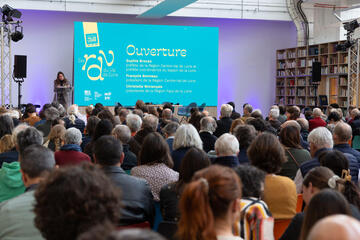Built on a commanding site at the foot of the Jebel Zerhoun (Morocco), the Mauritanian capital, founded in the 3rd century B.C., became an important outpost of the Roman Empire and was graced with many fine buildings. Extensive remains of these survive in the archaeological site. Volubilis was later briefly to become the capital of Idris I, founder of the Idrisid dynasty.
In 2000, UNESCO included the Loire Valley in the World Heritage of Humanity List, which reflects the wealth and diversity of the Earth’s cultural and natural heritage. Each month in 2015, Mission Val de Loire is presenting a different site to you which, as well as being a world heritage, is also part of our heritage.
Volubilis contains essentially Roman vestiges of a fortified municipium. Covering an area of 42 hectares, it is of outstanding importance demonstrating urban development and Romanisation at the frontiers of the Roman Empire and the graphic illustration of the interface between the Roman and indigenous cultures.
The archaeological vestiges of this site bear witness to several civilizations, however. These influences testify to Mediterranean, Libyan and Moor, Punic, Roman and Arab-Islamic cultures as well as African and Christian cultures. They are evident in the urban evolution of the town, the construction styles and architectural decorations and landscape creation.
Photos: CC Jamie McCaffrey @Flickr
The project "Protection and Promotion of Moroccan Antique Heritage: Volubilis", coordinated by the PRISME laboratory of Orléans University and in which Mission Val de Loire is involved, has been selected as part of the Call for Research Proposals of Regional Interest launched by the Centre-Loire Valley Region. This project will be presented in a forthcoming article.
All the phases of its ten centuries of occupation, from prehistory to the Islamic period, are represented.
The vestiges bear testimony to diverse periods, from Mauritanian times when it was part of an independent kingdom, to the Roman period when it was a metropolis of the Roman province of Mauritania Tingitana, a period called the "dark ages" with, towards the end, a Christian era, and finally an Islamic period characterised by the founding of the dynasty of the Idrisids.
Online:





![Nouvelles Renaissance(s] 2023](/var/storage/images/val-de-loire-refonte/dossier-de-parametrage/pied-de-page/nouvelles-renaissance-s-2023/517479-13-fre-FR/Nouvelles-Renaissance-s-2023_image_largeur220.png)


 Lettre d'information
Lettre d'information
 Facebook
Facebook
 Flickr
Flickr
 Podcloud
Podcloud
 Dailymotion
Dailymotion
 Box
Box
 Slideshare
Slideshare
 Diigo
Diigo

